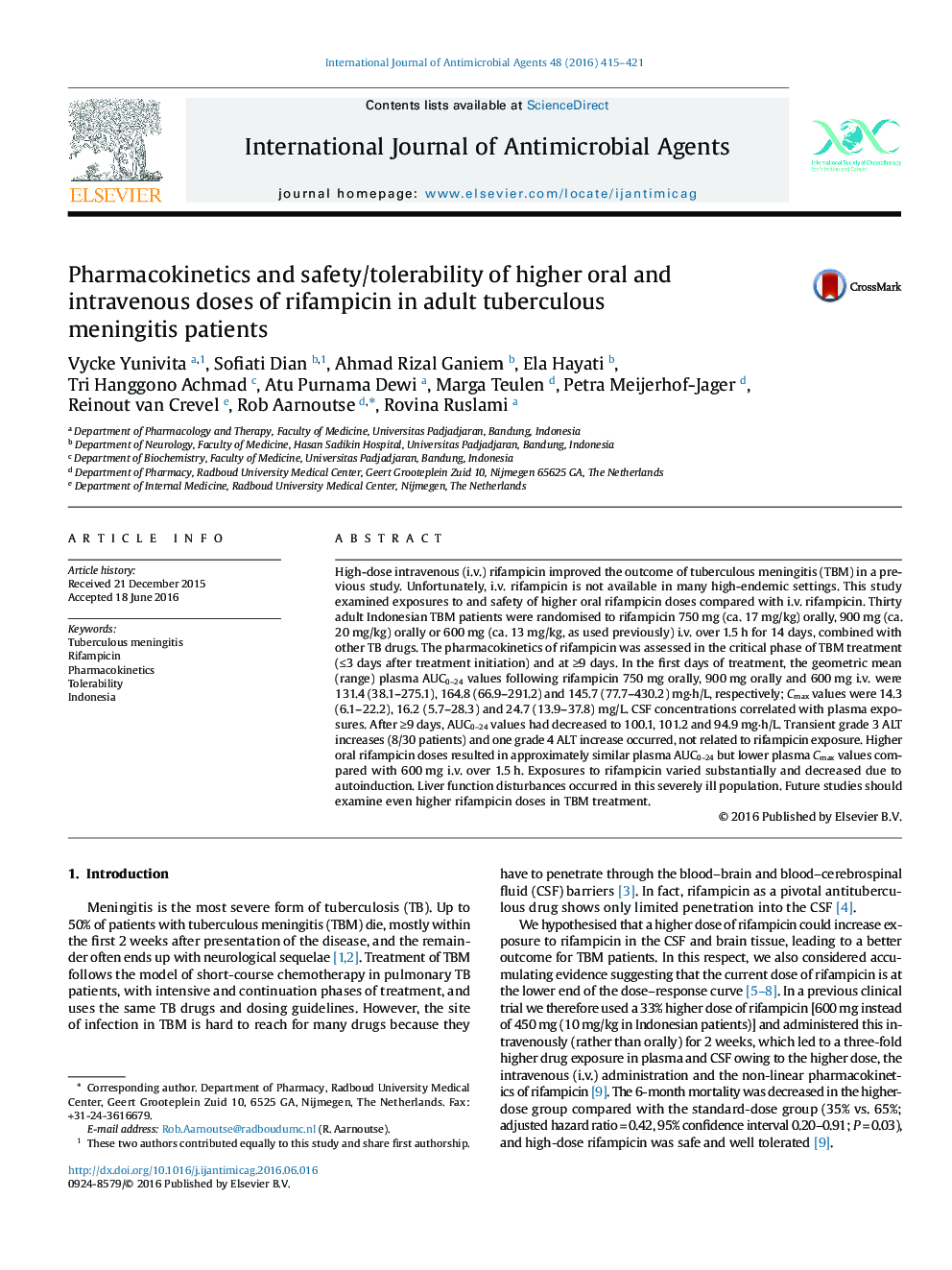| Article ID | Journal | Published Year | Pages | File Type |
|---|---|---|---|---|
| 3358377 | International Journal of Antimicrobial Agents | 2016 | 7 Pages |
Abstract
High-dose intravenous (i.v.) rifampicin improved the outcome of tuberculous meningitis (TBM) in a previous study. Unfortunately, i.v. rifampicin is not available in many high-endemic settings. This study examined exposures to and safety of higher oral rifampicin doses compared with i.v. rifampicin. Thirty adult Indonesian TBM patients were randomised to rifampicin 750âmg (ca. 17âmg/kg) orally, 900âmg (ca. 20âmg/kg) orally or 600âmg (ca. 13âmg/kg, as used previously) i.v. over 1.5âh for 14 days, combined with other TB drugs. The pharmacokinetics of rifampicin was assessed in the critical phase of TBM treatment (â¤3 days after treatment initiation) and at â¥9 days. In the first days of treatment, the geometric mean (range) plasma AUC0-24 values following rifampicin 750âmg orally, 900âmg orally and 600âmg i.v. were 131.4 (38.1-275.1), 164.8 (66.9-291.2) and 145.7 (77.7-430.2) mgâ
h/L, respectively; Cmax values were 14.3 (6.1-22.2), 16.2 (5.7-28.3) and 24.7 (13.9-37.8) mg/L. CSF concentrations correlated with plasma exposures. After â¥9 days, AUC0-24 values had decreased to 100.1, 101.2 and 94.9âmgâ
h/L. Transient grade 3 ALT increases (8/30 patients) and one grade 4 ALT increase occurred, not related to rifampicin exposure. Higher oral rifampicin doses resulted in approximately similar plasma AUC0-24 but lower plasma Cmax values compared with 600âmg i.v. over 1.5âh. Exposures to rifampicin varied substantially and decreased due to autoinduction. Liver function disturbances occurred in this severely ill population. Future studies should examine even higher rifampicin doses in TBM treatment.
Related Topics
Life Sciences
Immunology and Microbiology
Applied Microbiology and Biotechnology
Authors
Vycke Yunivita, Sofiati Dian, Ahmad Rizal Ganiem, Ela Hayati, Tri Hanggono Achmad, Atu Purnama Dewi, Marga Teulen, Petra Meijerhof-Jager, Reinout van Crevel, Rob Aarnoutse, Rovina Ruslami,
